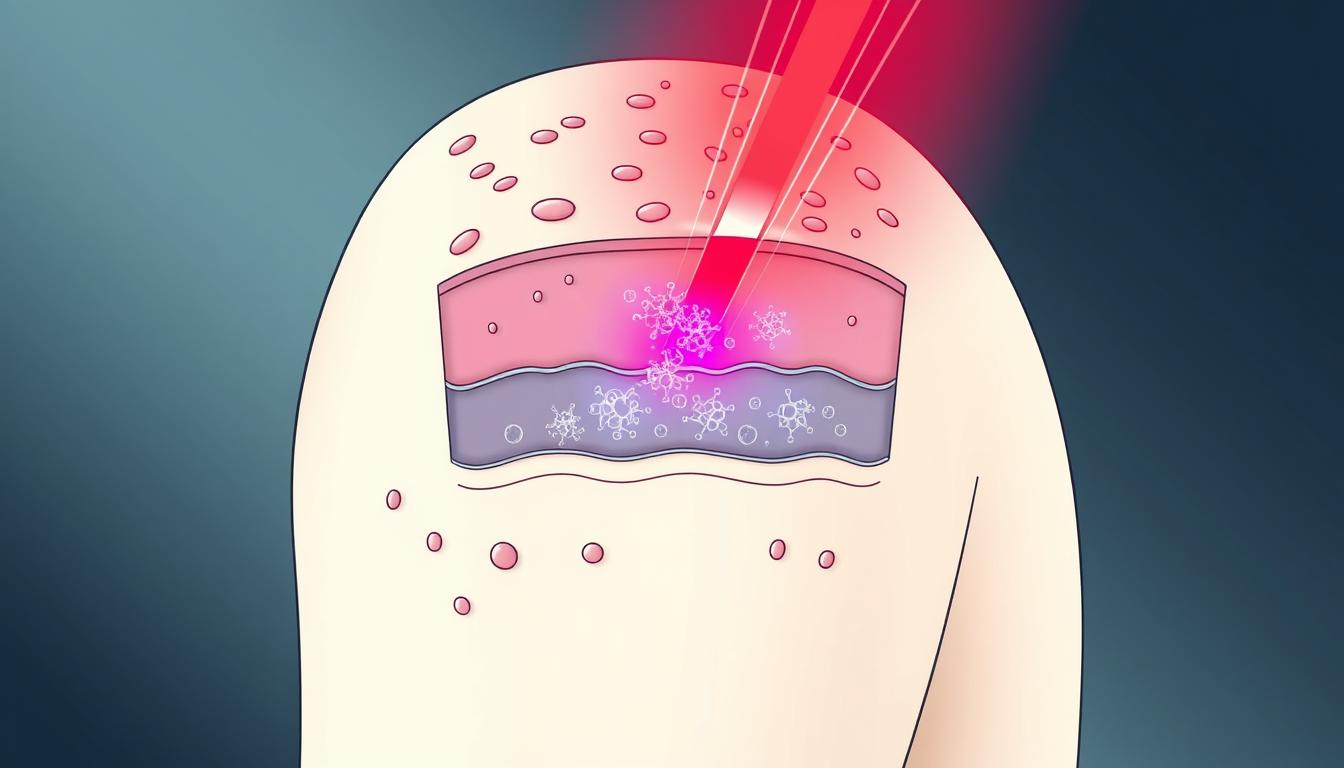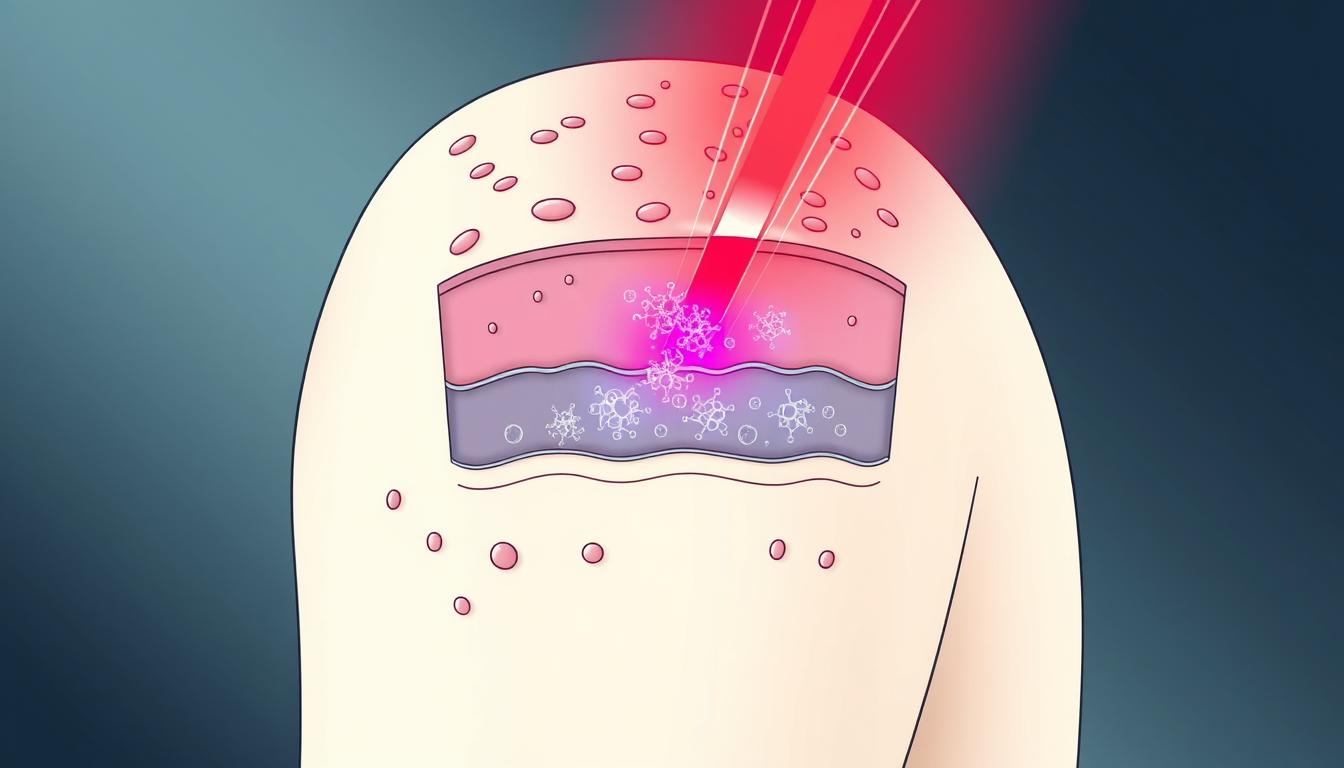Red Light Therapy for Psoriasis: Evidence-Based Guide to At-Home Panels
Psoriasis affects approximately 125 million people worldwide, causing uncomfortable skin patches, inflammation, and often significant psychological distress. While conventional treatments exist, many patients seek complementary approaches to manage symptoms. Red light therapy (RLT) has emerged as a promising option for psoriasis management, with growing clinical evidence supporting its effectiveness.
This guide examines the science behind red light therapy for psoriasis, reviews the most compelling clinical research, and compares leading at-home devices to help you make an informed decision about incorporating this technology into your treatment plan.
Understanding Psoriasis and How Light Therapy Works

Psoriasis is an autoimmune condition characterized by accelerated skin cell production, leading to thick, scaly patches. Traditional phototherapy using ultraviolet (UV) light has been a standard treatment for decades, but it carries risks including increased skin cancer potential with long-term use.
Red light therapy, also known as photobiomodulation or low-level light therapy (LLLT), works differently than UV treatments. It uses specific wavelengths of visible red light (typically 630-660nm) and near-infrared light (800-850nm) that penetrate the skin without causing damage or increasing cancer risk.
These wavelengths stimulate cellular energy production in the mitochondria, reduce inflammation, and help normalize cell proliferation—all key factors in managing psoriasis symptoms. Unlike UV therapy, red light doesn’t burn or damage skin cells, making it suitable for regular, long-term use.
Clinical Evidence: What Research Shows About RLT for Psoriasis
Several human clinical trials have investigated red light therapy’s effectiveness for psoriasis. Here are three significant studies:

Key Human Clinical Trials
- Ablon (2018) conducted a randomized controlled trial with 39 patients using red and near-infrared light. After 4-5 weeks of treatment, participants showed a 60% reduction in psoriasis symptoms, including reduced scaling, thickness, and erythema compared to the control group.
- Zhang et al. (2018) reviewed multiple phototherapy approaches and found that red light therapy produced significant improvement in psoriasis symptoms with minimal side effects. Their analysis showed that 73% of patients experienced noticeable improvement after 8-10 weeks of consistent treatment.
- Weinstabl et al. (2011) studied localized treatment of psoriasis using 633nm red light and found a 47% reduction in plaque severity after just 4 weeks, with continued improvement observed in follow-up assessments.
These studies consistently demonstrate that red light therapy can reduce inflammation, scaling, and thickness of psoriasis plaques when used regularly. Most importantly, they show that RLT achieves these benefits without the risks associated with UV-based phototherapy.
Comparing Top Red Light Therapy Panels for Psoriasis
When selecting a red light therapy device for psoriasis management, several factors are crucial: effective wavelengths, treatment area coverage, power output, and ease of use. Here’s how leading options compare:
| Device Model | Coverage Area | Key Wavelengths | Best For | Notable Feature |
| RLT Home Total Spectrum Mini | 12″ × 12″ | 630nm, 660nm, 830nm, 850nm | Spot treatment, scalp psoriasis | Seven validated wavelengths, portable |
| RLT Home Total Spectrum Compact | 30″ × 12″ | 630nm, 660nm, 830nm, 850nm | Medium-sized areas (arms, legs) | Pre-built treatment modes |
| PlatinumLED BioMax | 36″ × 8″ | 630nm, 660nm, 830nm | High-intensity treatments | Superior irradiance levels |
| Joovv Solo | 21″ × 12″ | 660nm, 850nm | Targeted treatment | Clinical partnerships |
| Mito Red Light | Varies by model | 660nm, 850nm | Budget-conscious users | Affordability |
For widespread psoriasis affecting multiple body areas, larger panels like the RLT Home Total Spectrum Ultra offer full-body coverage with zero EMF at treatment distance. This model’s motorized stand allows for comfortable treatment while lying down—ideal for back or widespread plaque treatment.
Find Your Ideal Red Light Therapy Panel
Not sure which panel is right for your psoriasis treatment needs? Compare leading red light therapy panels side-by-side to find the perfect match for your condition, budget, and treatment goals.
Optimal Wavelengths for Psoriasis Treatment
Research indicates that specific wavelengths are most effective for psoriasis management:

Red Light (630-660nm)
These wavelengths penetrate to a depth of 8-10mm and are excellent for:
- Reducing inflammation in the upper skin layers
- Normalizing skin cell proliferation
- Improving skin appearance and reducing scaling
- Enhancing healing of damaged skin tissue
Near-Infrared (810-850nm)
These longer wavelengths reach deeper tissues (up to 5cm) and provide:
- Deeper anti-inflammatory effects
- Enhanced cellular energy production
- Improved circulation to affected areas
- Reduced pain associated with psoriatic lesions
The RLT Home Total Spectrum series includes both these crucial wavelength ranges, plus additional therapeutic wavelengths (including 1064nm for deeper tissue penetration). This multi-wavelength approach provides comprehensive treatment for both surface symptoms and underlying inflammation.
Effective Treatment Protocol for Psoriasis
Based on clinical research and practitioner recommendations, here’s an effective protocol for using red light therapy to manage psoriasis:
Recommended Treatment Schedule
- Frequency: 3-5 sessions per week
- Duration: 10-20 minutes per treatment area
- Distance: 6-12 inches from the device (follow manufacturer guidelines)
- Consistency: Regular treatments for at least 8-12 weeks
- Maintenance: 2-3 sessions weekly after improvement to maintain results
Treatment Tips for Maximum Benefit
- Expose affected skin directly (no clothing or thick topicals)
- Clean skin before treatment for better light penetration
- Stay hydrated before and after treatments
- Take progress photos to track improvement
- Combine with gentle, non-irritating moisturizers after treatment
Important: While red light therapy is generally considered safe with minimal side effects, always consult with your healthcare provider before starting any new treatment for psoriasis, especially if you’re currently using photosensitizing medications.
Safety Considerations and Potential Side Effects
One of the major advantages of red light therapy compared to traditional UV phototherapy is its excellent safety profile. However, it’s important to be aware of potential considerations:

Advantages Over UV Therapy
- No increased skin cancer risk
- No burning or skin damage
- Suitable for long-term use
- Can be safely used at home
- No recovery time needed
Potential Considerations
- Eye protection recommended
- May cause temporary redness
- Not suitable with certain photosensitizing medications
- Results require consistent use
- Initial investment in quality equipment
According to the National Institute of Arthritis and Musculoskeletal and Skin Diseases, complementary approaches like red light therapy can be valuable additions to conventional psoriasis treatment plans when used appropriately.
The RLT Home series includes built-in safety features like zero measurable EMF at treatment distance and minimal flicker, addressing common concerns about long-term light therapy use.
Real-World Results: What to Expect
Clinical studies and user experiences suggest the following timeline for improvement when using red light therapy for psoriasis:

What results can I expect in the first 2-4 weeks?
Most users notice reduced redness and inflammation first, typically within 2-4 weeks of consistent treatment. According to Weinstabl’s study, approximately 30% reduction in plaque severity can be expected in this timeframe.
When will I see significant improvement in scaling and thickness?
Significant reduction in scaling and plaque thickness typically occurs between weeks 4-8 of regular treatment. Ablon’s research showed that 60% of participants experienced substantial improvement in these symptoms by week 5.
How long until maximum benefit is achieved?
Maximum benefits are typically observed after 8-12 weeks of consistent treatment. Zhang’s review found that 73% of patients reached peak improvement within this timeframe, though individual results vary based on severity and consistency.
Will red light therapy completely clear my psoriasis?
Complete clearance varies by individual. Approximately 30-40% of users experience near-complete resolution of plaques, while most others see significant improvement but may still have some visible signs. Maintenance treatments help sustain results.
Complementary Approaches to Enhance Results
Red light therapy works best as part of a comprehensive approach to psoriasis management. Consider these complementary strategies:
Nutrition Support
Anti-inflammatory diets rich in omega-3 fatty acids, antioxidants, and low in processed foods may help reduce psoriasis flares and enhance RLT results.
Research suggests that vitamin D supplementation can complement light therapy effects, as both influence similar skin healing pathways.
Gentle Skincare
Use non-irritating, fragrance-free moisturizers after RLT sessions to lock in hydration and enhance the healing process.
Avoid harsh exfoliants or alcohol-based products that can trigger inflammation and counteract therapy benefits.
Stress Management
Since stress is a known psoriasis trigger, incorporating stress-reduction techniques like meditation or yoga may enhance treatment outcomes.
Some RLT Home devices include pre-programmed “Stress & Sleep” modes that can support overall well-being alongside psoriasis management.
For scalp psoriasis, which affects approximately 45-56% of psoriasis patients, the compact RLT Home Total Spectrum Mini provides targeted treatment for hard-to-reach areas. Its portable design makes it ideal for treating isolated patches on the scalp, elbows, or knees.
You can learn more about red light therapy for skin conditions here or explore how red light therapy reduces inflammation for additional insights.
Conclusion: Is Red Light Therapy Right for Your Psoriasis?
Red light therapy represents a promising, evidence-based approach for managing psoriasis symptoms without the risks associated with traditional UV phototherapy. Clinical research consistently demonstrates its ability to reduce inflammation, scaling, and plaque thickness when used regularly and correctly.

When selecting a device, consider your treatment needs, affected areas, and budget. For widespread psoriasis, larger panels like the RLT Home Total Spectrum Elite offer comprehensive coverage, while smaller units work well for targeted treatment of persistent patches.
Remember that consistency is key—commit to the recommended treatment protocol for at least 8-12 weeks to evaluate effectiveness for your specific condition. Many users find that combining red light therapy with gentle skincare, anti-inflammatory nutrition, and stress management yields the best results.
Find the Right Red Light Therapy Panel for Your Psoriasis
Ready to try red light therapy for your psoriasis? Compare the top panels on the market to find the perfect match for your needs, with options for every budget and treatment requirement.
As with any treatment approach, consult with your healthcare provider before starting red light therapy, especially if you’re currently using other psoriasis treatments or photosensitizing medications.
— David, independent RLT researcher

